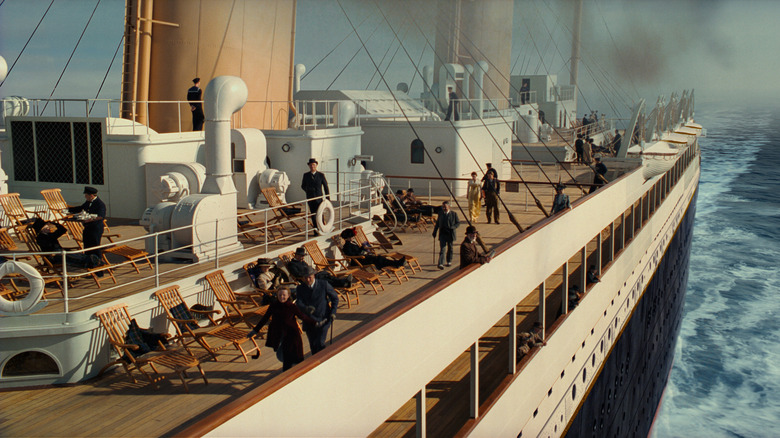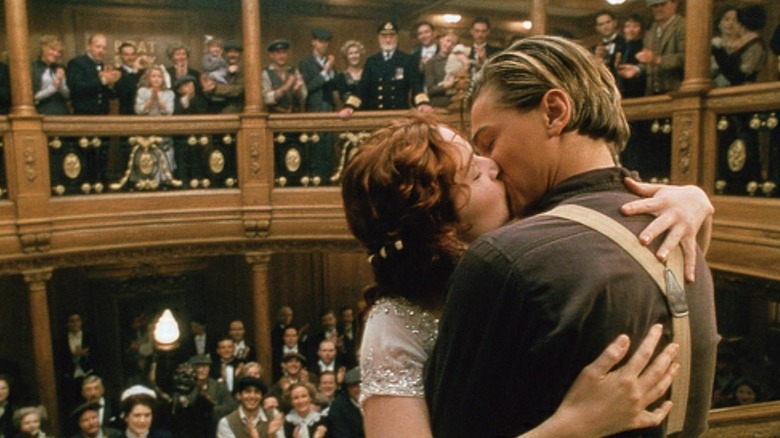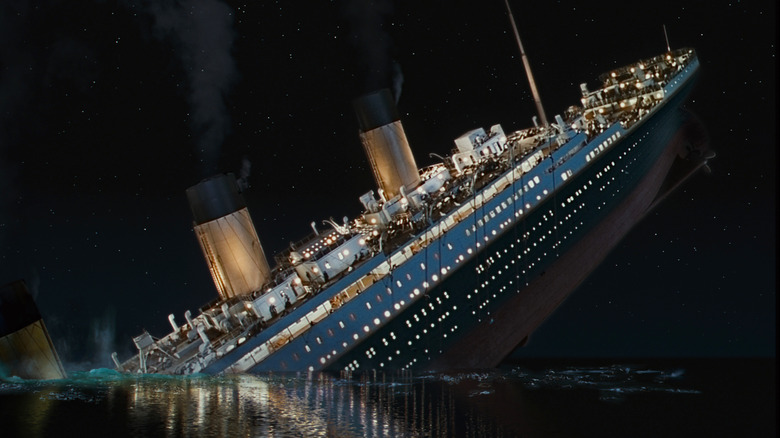How Titanic Used Motion Capture Technology Before Robert Zemeckis Obsessed Over It
(To celebrate "Titanic" and its impending 25th-anniversary re-release, we've put together a week of explorations, inquires, and deep dives into James Cameron's box office-smashing disaster epic.)
"Titanic" is a truly monumental film, an epic the likes of which we rarely get anymore. James Cameron lead a team that crafted a touching and emotional romance for the ages, and a thrilling disaster movie with incredible effects both practical and digital. Few movies can give us the romantic splendor of Jack and Rose's first kiss, while simultaneously giving us the visual splendor and absolute terror of the shipwreck. This may have started as an excuse for Cameron to be able to see the shipwreck in person, but it is hard to argue against the sheer cinematic joy of the final film.
Despite a skyrocketing budget and a very skeptical studio, "Titanic" ended up becoming one of the biggest movies ever made, and it is easy to see why. This is simply a stunning and breathtaking movie, one that helped usher in a new era that forever changed Hollywood blockbusters. Indeed, the film's, well, titanic success helped pave the way for modern historical epics like "Master and Commander: The Far Side of the World," and "There Will Be Blood." And yet, few movies have managed to come close to the sheer sense of scale of "Titanic," which is probably why Cameron himself may make a return to the genre and show us how it's done.
Like "Lord of the Rings," "Titanic" is a miracle of a movie where so many different elements that could have easily clashed and burned actually worked well to create an unparalleled cinematic experience. From the massive models and the film's use of a water tank to create verisimilitude and accuracy, to the VFX, Cameron combined the best of old and new school. One particular aspect of the film that is often overlooked in talking about its achievements and innovations is motion capture, a technology "Titanic" used before "The Phantom Menace" gave us the first big digital character, before Gollum, and before Robert Zemeckis became so obsessed with the technology he turned into a factory of uncanny valley nightmares.
Making the impossible possible
Motion capture — a technique wherein actors' movements are captured in order to be replicated on the screen while replacing the physical performers — is one of the oldest cinematic techniques there is, finding its root in animation. Way back in 1915, animator Max Fleischer developed rotoscoping, an animation technique in which animators traced over live-action footage, essentially copying the actors' every move painstakingly by hand and transforming it into a cartoon. This was used in films like "Snow White and the Seven Dwarfs" and Ralph Bakshi "The Lord of the Rings."
Of course, the way we know motion capture today belongs to the digital world, wherein live-action actors wear special suits that translate their movements onto a digital system, which animators and VFX artists can then use to create entirely new creatures. Arguably the best-known use of motion capture in film is Gollum in "The Two Towers." Before it, Lucas used the technology for "Star Wars: Episode I – The Phantom Menace" where Jar-Jar Binks became the first ever fully digital main character in a motion picture.
The technology is one of the best examples of the magic of digital filmmaking and cinema's ability to transport us to new worlds and show us the impossible. It is understandable that Zemeckis, who became celebrated for his eye for visual effects in movies and his ability to marry old and new techniques, would become obsessed with this technology in the mid-'00s. But before "Polar Express" and "Beowulf" made us scared of the uncanny valley of motion capture, James Cameron and his team populated the Titanic with believable motion-captured digital actors.
Populating the Titanic
In a behind-the-scenes video from Paramount Pictures (via Murat Özbek on YouTube) about the making of "Titanic," visual effects supervisor Rob Legato talks about shooting vignettes of people in order to composite them digitally and place them around the Titanic to populate the ship with real people.
But what makes this fascinating is how Legato recognizes the value of motion capture as a tool rather than a solution in and of itself. "Even though you could capture the way a human moves, it's really the way they move that makes you believe that they're dramatically in that scene," Legato said.
In order to fix this, the team had to actually direct the actors, to give them direction but also a purpose. "Context gives these little vignettes come to life," Legato added. This meant having two people walk, but having them know what they're walking toward, and then grabbing all these individual vignettes of people doing small acts and digitally placing them around the ship.
The result is a movie that feels real, populated by living people onboard the RMS Titanic, and even 25 years later, this helps "Titanic" inspire as much awe as its titular ship.


